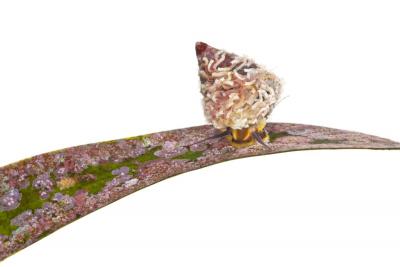Public lecture
How will marine life cope with ocean acidification?
Jason Hall-Spencer, Professor of Marine Biology at Plymouth University
 We face some startling statistics: the oceans are acidifying at a rate that is unprecedented for at least the past 55 million years because they absorb around 25% of the carbon dioxide released by human activity. The coasts of Europe are already 30% more acidic than before the Industrial Revolution and look set to become 150% more acidic in our lifetimes. I have teamed-up with students and colleagues to investigate coastal areas that are already have high carbon dioxide levels, to find out which organisms can survive and how ocean acidification will affect marine systems. In some places tectonic movements of the Earth’s crust create areas where carbon dioxide bubbles up from the sea floor like a Jacuzzi, acidifying large areas for hundreds of years. By studying these sites scientists have shown that long-term exposure to increases in carbon dioxide alters coastal food-webs and causes marine biodiversity loss in Europe and on both coasts of the Pacific Ocean. One of the solutions put forward to combat ocean acidification is to carry out carbon capture and storage below the sea floor; work at natural carbon dioxide vents shows what happens if the storage areas leak. Key groups, like sea urchins and coralline algae are consistently compromised and fish reproduction is disrupted as carbon dioxide levels ramp up. This approach augments laboratory work on the effects of ocean acidification which is usually short-term and on organisms that are isolated from their competitors, parasites or predators.
We face some startling statistics: the oceans are acidifying at a rate that is unprecedented for at least the past 55 million years because they absorb around 25% of the carbon dioxide released by human activity. The coasts of Europe are already 30% more acidic than before the Industrial Revolution and look set to become 150% more acidic in our lifetimes. I have teamed-up with students and colleagues to investigate coastal areas that are already have high carbon dioxide levels, to find out which organisms can survive and how ocean acidification will affect marine systems. In some places tectonic movements of the Earth’s crust create areas where carbon dioxide bubbles up from the sea floor like a Jacuzzi, acidifying large areas for hundreds of years. By studying these sites scientists have shown that long-term exposure to increases in carbon dioxide alters coastal food-webs and causes marine biodiversity loss in Europe and on both coasts of the Pacific Ocean. One of the solutions put forward to combat ocean acidification is to carry out carbon capture and storage below the sea floor; work at natural carbon dioxide vents shows what happens if the storage areas leak. Key groups, like sea urchins and coralline algae are consistently compromised and fish reproduction is disrupted as carbon dioxide levels ramp up. This approach augments laboratory work on the effects of ocean acidification which is usually short-term and on organisms that are isolated from their competitors, parasites or predators.
 What is immediately obvious at all of the shallow carbon dioxide seeps is that ocean acidification stimulates the growth of many algae and seagrasses. Increases in carbon dioxide stimulate the algae that cause reefs to erode away, and it reduces the biodiversity both of flora and fauna. If temperatures remain low enough then the symbiotic algae of corals and anemones do well, but so do invasive species of seaweed which could choke coral reefs. Some organisms can adapt to long-term acidification – some can build their skeletons even faster at higher carbon dioxide levels – and others have protective tissues that allow them to survive, but a combination of acidification and rising temperatures is lethal to many. What I am really worried about is that ocean acidification is making seawater corrosive to calcium carbonate over vast regions of the planet in areas which have never been corrosive before. There is a growing awareness that this is very likely to have widespread effects due to coral reef dissolution and the disruption of food chains in productive polar seas.
What is immediately obvious at all of the shallow carbon dioxide seeps is that ocean acidification stimulates the growth of many algae and seagrasses. Increases in carbon dioxide stimulate the algae that cause reefs to erode away, and it reduces the biodiversity both of flora and fauna. If temperatures remain low enough then the symbiotic algae of corals and anemones do well, but so do invasive species of seaweed which could choke coral reefs. Some organisms can adapt to long-term acidification – some can build their skeletons even faster at higher carbon dioxide levels – and others have protective tissues that allow them to survive, but a combination of acidification and rising temperatures is lethal to many. What I am really worried about is that ocean acidification is making seawater corrosive to calcium carbonate over vast regions of the planet in areas which have never been corrosive before. There is a growing awareness that this is very likely to have widespread effects due to coral reef dissolution and the disruption of food chains in productive polar seas.
As it is difficult to scale-up from laboratory studies, natural carbon dioxide vents provide an opportunity to show which organisms and processes are resilient to ocean acidification. I hope scientists can combine forces with professional educators and communicators to describe how carbon dioxide emissions will shape coastal ecosystems and to inform the people that this will affect the most, like those who rely on aquaculture, fisheries and coastal tourism.
- 3266 reads
